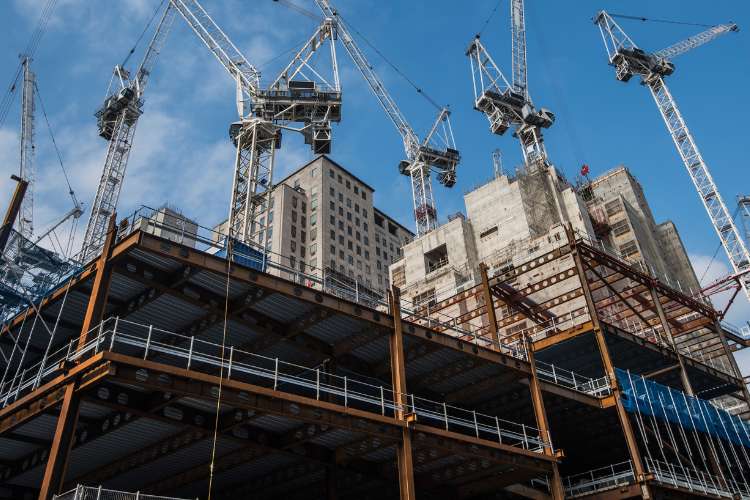The construction industry is notorious for cash-flow bottlenecks thanks to razor-thin margins, retainage, and drawn-out, unpredictable payment cycles. So, while financing is essential to mitigate cash-flow issues, it also means the term “debt” strikes fear into the heart of even the most seasoned contractors who have taken on too much in the past, or taken on predatory types of debt (i.e Merchant Cash Advances or MCAs), perhaps even filing for bankruptcy. As an entrepreneur running a construction business, avoiding debt entirely isn’t good business. It’s a waste of an opportunity to do more with the cash you have to grow your business. If you’re not leveraging debt as a construction business owner, you’re missing out on a valuable resource for growing your business.
Table of Contents
4 Questions for Using Construction Business Debt Strategically
To use debt strategically, match the repayment terms to how you plan to use the funds, weigh the cost of the debt against how much profit you’ll gain from using it, and use leverage with your suppliers or GCs to offset some of the cost of debt. To achieve this, ask yourself four simple questions:
- How am I going to use the debt?
You can take a good debt product and make it a bad debt product if you use it for the wrong purpose. The first step is knowing how you want to use it, and then finding a form of debt with repayment terms that match the needs for the funds. Pair short-term, quick revenue-generating expenses with short-term debt products (working capital), while pairing long-term expenses—asset purchases that will help generate revenue for you over time—with longer-term financing options.
- What is the cost of the debt?
Financing isn’t free—there’s always a financing cost involved, though the rate varies based on the type of debt. Do the math, because your next question is…
- Is the revenue I’ll generate with the use of the funds greater than the cost of the debt?
It all comes down to simple ROI. If the return you’ll get is greater than how much it costs to repay the debt, use it. For example, if the cost of the debt you’re taking on is 5%, but you’ll earn a 15% return on your next project—you just made an additional 10% in profit. This is where financial forecasting is essential so you can weigh the cost of debt carefully against your profit margins.
- Can I strategically leverage my relationships to offset some of the cost of my debt?
Let’s use a simple example again of a 5% financing charge. On a $100,000 loan, you’ll pay 5% interest, which comes to $5,000. But if you can leverage that $100,000 loan to pay a supplier upfront and extract a 3% discount on materials, you’ll save $3,000 from your supplier, offsetting some of that $5,000 interest cost. How about your GC relationship? Do you feel confident enough that if you increase your bid by 2%, you’d still be awarded the job?
Leveraging your relationships, and leveraging the cash from the loan to extract value can offset some, if not all of the cost of financing. Bottom line: If there are opportunities to grow your business and the profit you generate is greater than the cost, it’s good debt. If the cost of debt is greater than the profit you can generate from it, it’s bad debt. There is one caveat here. If you believe establishing a new customer relationship is a good strategic move long-term, then you may consider taking on debt that decreases your profit on this particular project, if it means establishing new profitable relationships.
6 Examples of Good Debt vs. Bad Debt in Construction
Let’s take a look at some common forms of debt and how they can be used effectively or not, depending on the circumstances.
Bank Line of Credit
Provided by a bank, a contractor line of credit is a revolving balance based on your business’s short-term assets. Because of this, you should use a bank line of credit for short-term working capital purposes. You’re not paying it down every month—you only have to pay interest on what you use. Do: Use it for emergency expenses, when you need the capital to pay for materials, labor or general corporate expenses but don’t have enough cash in your bank account due to a slow-paying project. Draw on your bank line of credit to cover these costs, and then turn around and repay it as soon as you get paid. Don’t: Use it to purchase vehicles or equipment for your business. That’s a mismatch of a short-term debt product with a long-term investment.
Credit Cards
Contractor credit cards are another form of working capital ideal for short-term, everyday expenses. Though credit cards are easy to obtain, offer flexibility and provide a revolving line of credit, they’re associated with lower limits and higher fees. Again, weigh the cost of using a credit card against the revenue you’ll generate from doing so and your goals for the funds. Do: Use it for monthly subscription fees, travel costs, utility bills and other ongoing corporate expenses, and then pay it off each month. This will help increase your business’s credit rating, enabling you to secure higher credit limits and more easily obtain other forms of debt down the line. Don’t: Put all of your business debt on a credit card, overspend on big-ticket items during periods of low cash flow, or fail to take into account merchant fees and other hidden fees. If you get behind on your payments, it can negatively impact your credit score and even immediately cause a slash to your bank credit lines elsewhere.
Material Financing
Material financing is a smart, sound way to help contractors leverage debt for business growth. Not only is this solution tailor-made for construction entrepreneurs—it’s impossible to misuse, by design. Unlike other forms of financing, which can be used to purchase many different types of assets, material financing is (naturally) specific to construction materials. It was formulated by construction industry experts, with subcontractors in mind. A material financing provider will pay your material suppliers upfront, so you can get the materials you need to take on more, larger projects with confidence. Then, you pay us back on terms of up to 120 days, allowing you to keep your cash flow running smoothly. It’s as simple, and beneficial, as that. Do: Use material financing if you are trying to grow your business and work in the commercial construction space. Don’t: Use material financing if you only work residential jobs, don’t strive to grow your business, or are just starting out in the construction industry. Find more information about whether material financing is the right fit for you.
Term Loans
With a term loan, you won’t receive a sum of upfront cash, rather the cash will go directly to the seller of the asset you want to purchase. In exchange, you’ll have a specified repayment schedule and fixed or floating interest rates. These should be used to purchase assets with a more long term ability to generate revenue for your business. Do: Use term loans to purchase assets such as equipment and commercial buildings to help grow your business. If you’re currently renting equipment or your building space, compare your rental costs to the rates on your loan. It might be more cost-effective to buy versus rent construction equipment or real estate. Don’t: Use it to pay your monthly construction software subscription or purchase vehicles for your personal use. If it’s not a long-term asset, or if it’s not generating revenue for your business, it’s a bad use of debt.
Construction Invoice Factoring
Construction invoice factoring is selling your unpaid invoices to a lender for a cash advance. The cash advance is usually 50-85% of the net invoice, minus a fee of 1-5% per month of the open invoice. With recourse factoring, you buy the invoice back if the customer fails to pay within a certain amount of time, while non-recourse factoring costs more because the factoring company assumes all risk in the event of non-payment by the general contractor or property owner. Do: Use factoring for short-term expenses if your business is growing fast, has fallen on hard times, or is struggling to secure a bank line of credit and you need cash quickly to pay for labor. Don’t: Use factoring to pay for expenses on projects that are not associated with the invoice you factored, and don’t use the capital for long-term investments such as equipment.
Merchant Cash Advance (MCA)
With a merchant cash advance, a lender gives you upfront cash in exchange for a percentage of your future revenue. It’s easy to see why MCAs are attractive to many entrepreneurs: you can quickly, easily get cash and do whatever you want with it. However, there are a few significant dangers with using MCAs:
- MCA companies automatically withdraw funds daily or weekly over a term that’s typically only 6-12 months, making it difficult for many subs to repay the balance.
- MCAs feature extremely high interest rates of anywhere between 35-100%, with some sources even estimating annual percentage rates ranging from 40% to 350%. In other words, the ultimate cost of using an MCA is going to be significantly higher than financing through another method.
Do: Avoid the use of MCA’s at all costs. Even if your business is struggling, the use of an MCA will likely make your situation even worse and put your business at risk. Look for alternative options. Don’t: Consider using an MCA. Simple as that.








